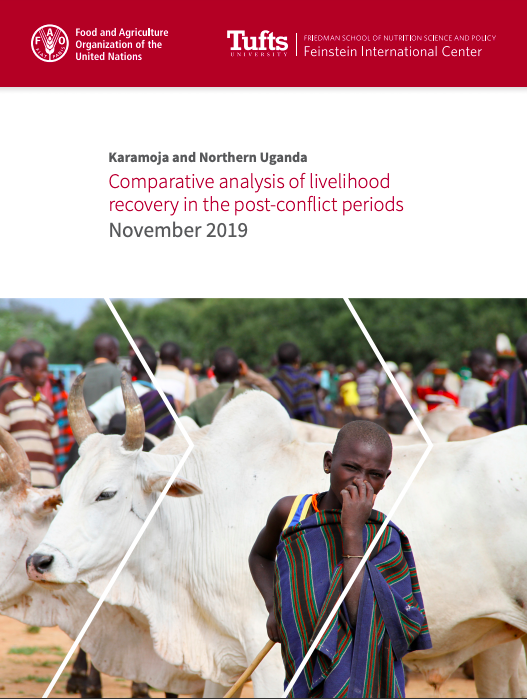This paper examines the parallel but separate trajectories of peace-building, transformation, and livelihood recovery in northern (Acholi and Lango sub-regions) and northeastern (Karamoja sub-region) Uganda over the past 15 years. While keeping in mind the key differences in these areas, we highlight the similarities in the nature of recovery, the continuing challenges and the need for external actors to keep in mind the ongoing tensions and vulnerability that could undermine the tenuous peace.
Challenges to recovery and long-term stability are similar across the two locations. Both northern Uganda and Karamoja continue to struggle with food insecurity and malnutrition, despite the massive influx of development funds, improved security and expansion of markets. In northern Uganda, the conflict continues to influence household livelihoods. Households that have a member who experienced war crimes are consistently worse off. These continuing problems with food security and nutrition call into question many assumptions about recovery and development. In particular, the idea that peace will bring a natural bounce in economic and household well-being does not appear to hold up in these cases.
Additional structural challenges to recovery in both locations include climate change and environmental degradation, poor governance and corruption, limited opportunities for decent work, livelihood transformation and loss, and conflict over land. These factors reinforce each other and make it extremely difficult for average households to develop sustainable and secure livelihoods.
External interventions often fail to take into account the local priorities and realities in these areas. Many programmes are place based or focus on rural areas, but the population is in flux. This is especially true for young people.
While the recent trajectories of recovery in Karamoja and northern Uganda are remarkably similar, the context, challenges, and livelihood recovery in each location are importantly unique. National actors should not seek to derive combined approaches or policies that lump together these two areas. In both cases, the lived reality, history and experiences of the population should be central to designing appropriate, effective and sustainable responses to the ongoing obstacles to a stable peace and full recovery.







